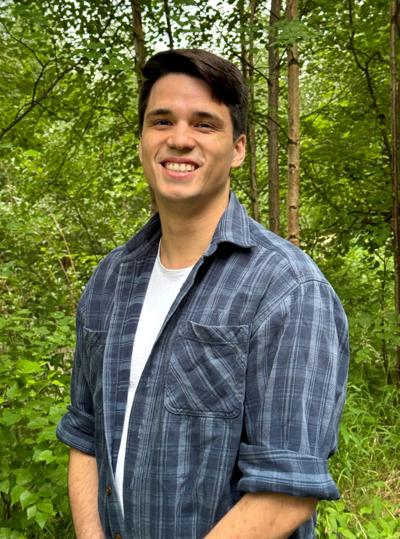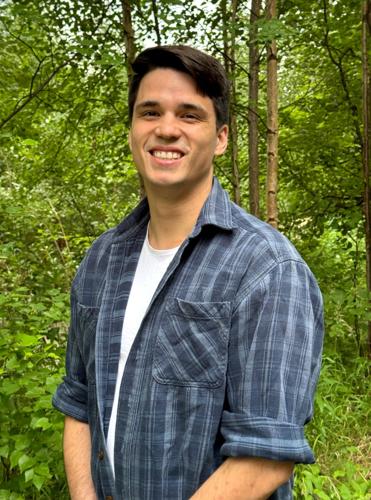Goldstream Valley resident Brandon “Putuuqti” Kowalski, a Democrat, is running for House District 36.
The district covers a horseshoe swath of Interior Alaska from the Canadian border to Delta Junction, Tok, Glennallen, parts of northern Fairbanks North Star Borough, and Nenana. It also covers a swath along the Yukon River, including Fort Yukon, Galena, Ruby, Huslia and Kaltag.
An Iñupiaq, Kowalski was born and raised in Kotzebue. After his family moved to Fairbanks and Goldstream Valley, he attended West Valley High School and earned degrees from the University of Alaska Fairbanks.
Kowalski left his position as a graduate research assistant for a career as a certified structural welder.
His main platforms are increased funding for public education, a restored defined benefit retirement system, balancing a budget that can sustain a Permanent Fund dividend with state services and protecting the subsistence way of life for rural Alaskans.
“Reaching all the communities in District 36 is vital to understand the needs of its residents,” Kowalski said at a recent candidate forum. “It’s a huge district and if I’m elected priority of mine is to visit most communities between sessions to touch base with constituents.”
Kowalski notes that state services cannot endure more cuts.
“We are not trimming fat anymore, we are cutting into the fat to provide the services that we are constitutionally obligated to provide,” Kowalski said. Funding service and listening to the needs of our community is critical.”
Education is a key example, having come from a family of educators.
“Asking our teachers and staff to get the results we want without the tools they need is a losing battle,” Kowalski said. “We can talk about school reform later once they have the resources they need. It’s something we owe our communities and the future of our state.”
Kowalski is emphatic about bridging political divides and placing the needs of the state first on major issues. One such, he said, is the subsistence fisheries facing the Yukon and Kuskokwim river communities.
As an Iñupiaq, he grew up practicing a culturally subsistence lifestyle.
“It’s not just a food issue, it’s a cultural issue,” he said. “We need to address this at the state level, to ensure these resources are there for our future generation and our current residents.”
What should the state’s budget priorities be?
Alaska is facing a budget crisis. Legislators have drawn from the Permanent Fund in recent years to cover our state’s budget deficit. The Permanent Fund belongs to the Alaskan people and is the backbone of our state’s financial security. We need to stop draining it if we want to ensure Alaska’s fiscal future for our children. I believe that the solution to our budget crisis is to increase revenue to balance the state budget without cutting essential public services. We are a resource rich state and we should not have a budget deficit; I believe we need to reexamine our current tax structures, to minimize the funneling of Alaskan dollars out of our state. I will not support any new sources of revenue that harm or fall primarily on working and rural Alaskans.
Education funding was a top concern in the state last session. How would you support education at the state level?
Both of my parents were educators. Our school system is facing a funding crisis. Around the state, schools are closing and excellent, qualified educators are leaving the state due to unstable school funding, poor employee benefits, and a high cost of living. We need to fund our schools through permanent inflation-proof increases to the Base Student Allocation (BSA). We also need to support our qualified educators. Alaska is currently the only state in the country that does not provide a pension for teachers. I support a defined benefits system for public employees, including educators. If we can provide our schools with enough stable funding, return to a pension retirement system for our educators, and work to reduce the cost of living for educators and all Alaskans, I believe our state’s education system will thrive.
What steps can the state take to support available housing?
We are seeing a housing shortage across the state. One major cause of this is the rising cost of constructing new housing. A contributing factor is the cost of shipping materials into the state. I would like to see a thorough examination of shipping practices and improvement of our shipping infrastructure in order to lower overall shipping cost. Doing so would not only lower the price of building materials, renovations/improvements, and new housing, but would also help lower the cost of goods and bring down the overall cost of living. I also support subsidized housing programs and similar support programs to keep families in need on their feet.
What role do national culture war topics have in the Alaska Legislature?
Culture war topics seek to divide us, and they make it difficult for us to make bipartisan progress on critical issues in order to improve the day-to-day lives of all Alaskans. As Alaskan people, our similarities run much deeper than our differences. We all want to live in a healthy, prosperous state. We want our children to grow up with opportunity. We want affordable living, a healthy environment, and our personal freedoms protected. If we can recognize these shared goals, we can work together to achieve them.
How would you work across the aisle with other lawmakers? Would you join a bipartisan coalition?
I would certainly join a bipartisan coalition to make progress on issues important to Alaskans. Our state has suffered because of partisan political games. I intend to put our district first before any party and work together with legislators across the aisle to get things done. My broad background has exposed me to many viewpoints, experiences, and ways of understanding the world. I have learned that no problem is solved from a single viewpoint – it takes coming together, finding common values and common ground to stand on, and pushing forward with a shared vision for improvement.
How should the state address outmigration and make Alaska more attractive to potential residents?
Many young Alaskans can’t afford to live and work in Alaska. We are seeing an exodus of young people and families to the Lower 48 where they have access to more educational opportunities and more jobs. We need to invest in our public education system including vocational programs, professional schools, and trade schools, so that our young people don’t have to leave the state to receive a quality education, and so that more parents want to raise their families here. We also need to address the high cost of living in rural Alaska, which is driving young families out of our communities because they cannot afford the cost of energy, food, and housing. If we can work together to address these pressing issues we can ensure that, into the future, Alaska is a great place to live, raise a family, and retire.
With a shortage of available natural gas in Cook Inlet and the lack of a pipeline to the North Slope, how would you address high energy costs in the Interior?
High energy costs and overall cost of living are making it nearly impossible for many families to make ends meet. One way to bring down energy costs is to support communities in diversifying their energy sources. I support responsible oil and gas development including a natural gas pipeline from the North Slope; natural gas is a byproduct of North Slope oil production and we should utilize this energy resource that would otherwise go to waste. I support tying rural communities into existing energy grids where possible and investing in long term energy infrastructure. Alaska has long been a leader in the energy sector. To remain an energy leader, we must develop renewable energy infrastructure to complement our current energy system. Investing in our energy infrastructure will not only bring energy online at a lower cost, but will also create good, high paying jobs for the next generation of Alaskan workers.
What are your thoughts on ranked choice voting?
I support ranked choice voting. Ranked choice voting allows Alaskans to have their voices better represented by giving them the freedom to vote for the candidate they want to see in office without fear of “throwing away” their vote or feeling like they need to vote based on party lines. Alaska’s ranked choice voting system also uses open primaries, which allows voters to participate in the primary election regardless of their registered party. Most Alaskan voters choose to not be affiliated with a political party. All Alaskans have a right to have their voices heard, regardless of party affiliation.
What would you do to foster a northern rail extension?
The Northern Rail Extension has been in the works for decades. The last time any major progress was made was in 2014 with the completion of the Tanana River bridge. This rail extension would improve our ability to transport goods, commercial freight, and heavy machinery over a broader swath of the Interior. A major barrier to this project’s implementation is its high cost; however, the State House passed a joint resolution this year calling for support to fund this project, citing it as essential to the state’s transportation needs. I agree that developing our transportation infrastructure is crucial and I support investment in this project.


